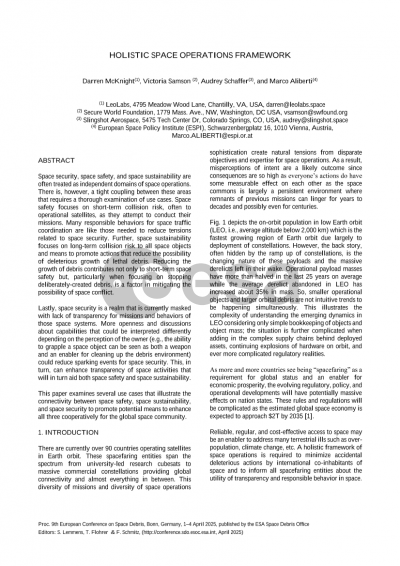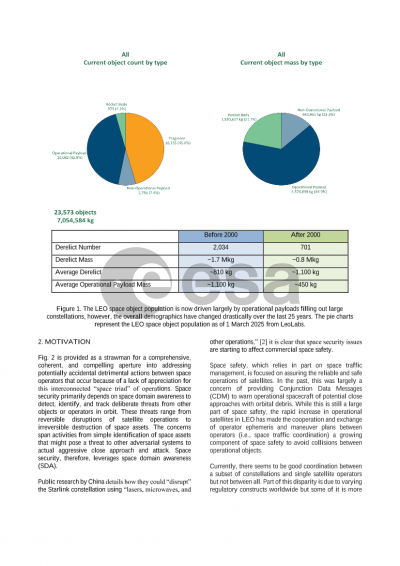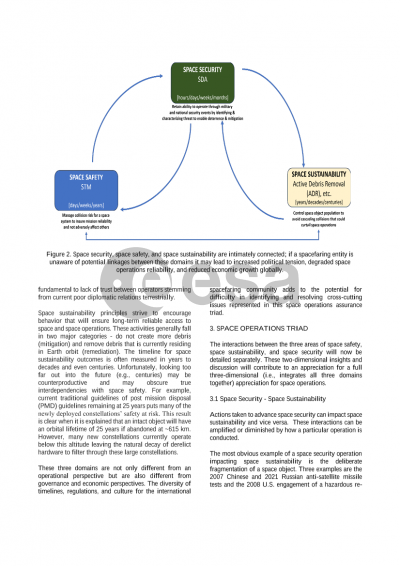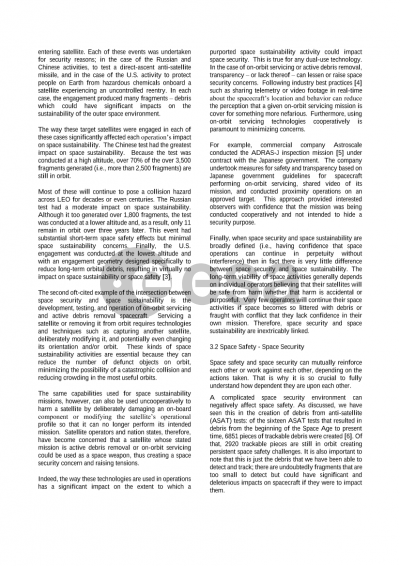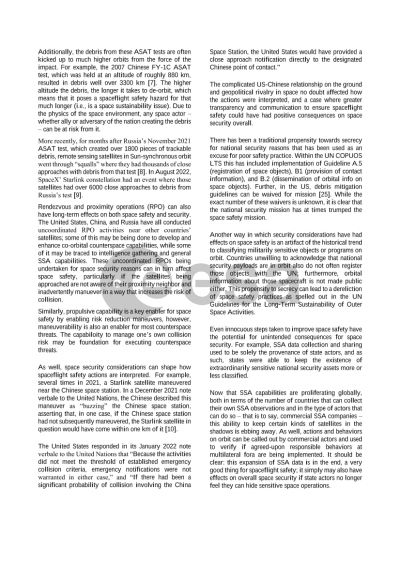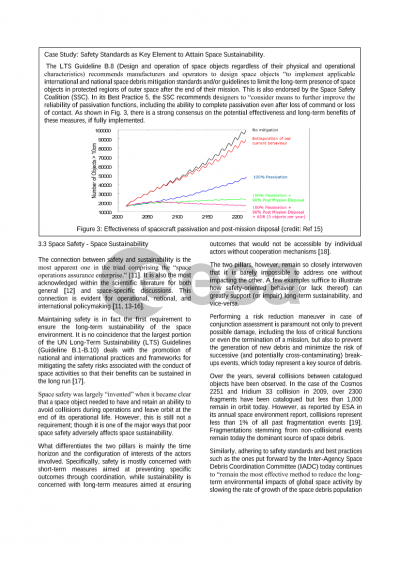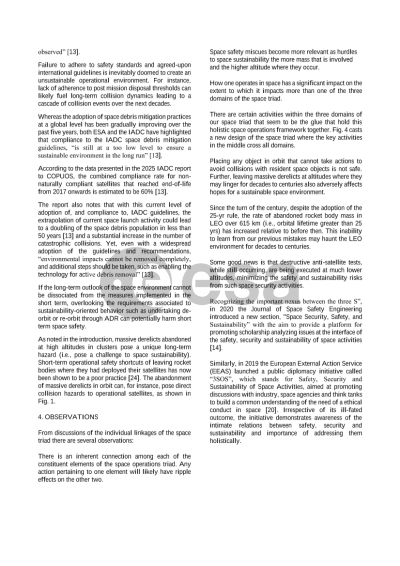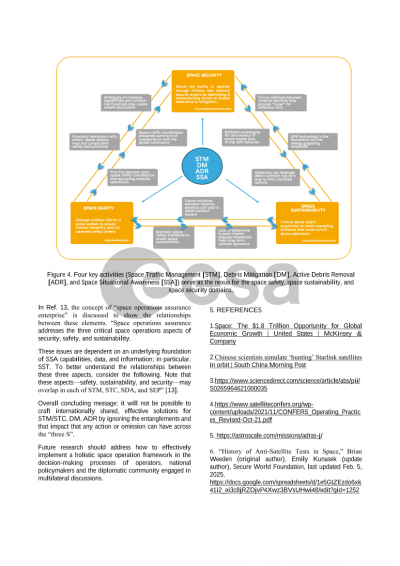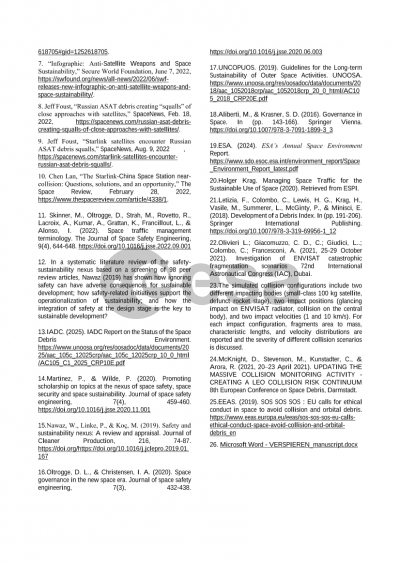Document details

Abstract
Space security, space safety, and space sustainability are often treated as independent pillars of space activity. In reality, there is a tight coupling between these domains that requires a thorough examination of use cases whereby ignoring these entanglements may harm one of these three pillars. Space safety focuses on short-term collision risk, often to operational satellites, as they attempt to conduct their missions. A lot of the responsible behaviors for space traffic coordination are similar to that which is needed to reduce tensions related to space security. Further, space sustainability focuses on long-term collision risk to all space objects and means to promote actions that reduce the possibility of deleterious growth of lethal debris. Reducing the growth of debris contributes not only to short-term space safety but, particularly when focusing on stopping deliberately-created debris, is a key factor in mitigating the possibility of space conflict. Lastly, space security is a realm that is currently masked with lack of transparency for missions and behaviors of those space systems. More openness and discussions about capabilities that could be interpreted differently depending on the perception of the owner (e.g., the ability to grapple a space object can be seen as both a weapon and an enabler for cleaning up the debris environment) could reduce sparking events for space security, and additionally can enhance transparency of space activities that will in turn aid both space safety and space sustainability.
This paper examines a number of use cases that illustrate the connectivity between space safety, space sustainability, and space security to promote potential means to enhance all three cooperatively for the global space community.
Preview
